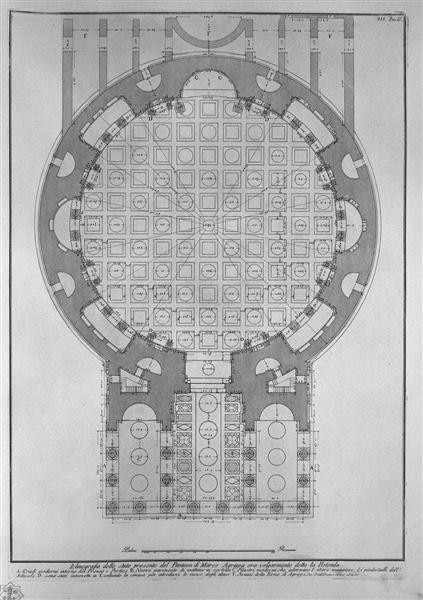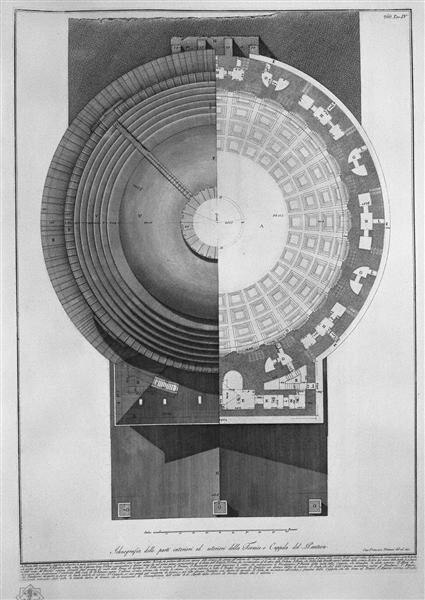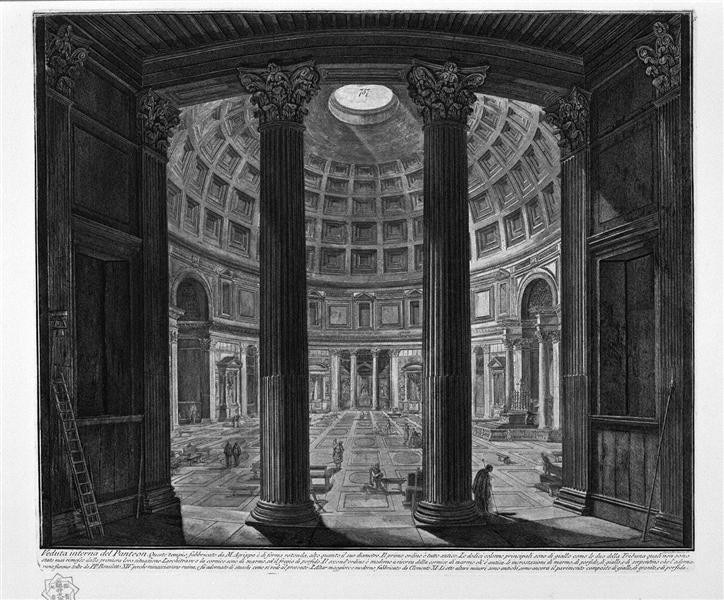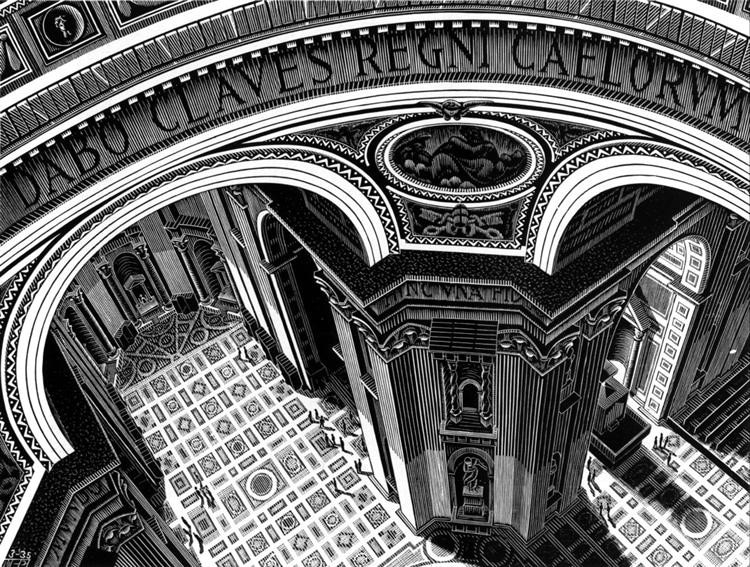Every April 21 at noon, the sun faces the Pantheon. It enters perpendicularly its oculus thus enveloping the wide circular cell. The sun marks the rhythm of the pillars sustaining the dome – eight pillars – thus shining triumphantly over one of the capital’s symbolic places. And as every April 21, the celebrations for the Birthday of Rome begin.
It has been seven days since Rome’s 2,776th birthday, and the Eternal City – a popular destination for centuries and the capital of the Bel Paese – seems almost to have lost its appeal, replaced perhaps by Milan. In fact, in that same week, Milan hosted nearly 400,000 visitors from around the world for the Design Week.

Many artists have depicted Rome – from its imperial fora to its churches, passing through the countryside, its villas, all the way to the coast. Bourgeois boys, successful artists, and intellectuals stopped by to discover, admire and paint the Eternal City during the Grand Tour. And it is precisely to this that we owe the most notable production.
Giovanni Antonio Canal (Canaletto), Caspar van Wittel (in Italy, better known as Gaspare Vanvitelli), William Turner, Bernardo Bellotto, the Russian Vasily Surikov, many and too many names would be listed but the production of Maurits Cornelis Escher is undoubtedly the least known and perhaps the most interesting. He lived in Rome for about ten years, from 1925 to 1935, at Via Poerio 122 – in the current Monteverde district. On the fourth floor, in a sort of turret, he kept his studio secret.

The Dutch artist gave life to a series of works that portrayed the city in an unprecedented, completely new way, fully respecting his geometric and almost exciting style. St. Peter’s Basilica – the Baroque cradle of the papal state – was a perfect subject for him. Its structured lines that in its majesty perfectly recreated his idea of geometries and labyrinths. Not the facade, nor its Chair, but he depicts an angle, a foreshortening, a perspective from above that is absolutely brilliant. He draws the shadows, the lights, the arcades, the floors up to the Latin dedication in the foreground: “Dabo claves regni caelorum” (“I will give you the keys to the kingdom of heaven”).
Surely it is a bit absurd to draw a few lines and then claim: ‘This is a house’.
M.C. Escher
Escher disrupts the artwork by entering as the creator God, from above, a deus ex machina who descends upon the scene and oversees everything. The lights and shadows become a means to give more depth and make the scene real, but only small hints, the rest is all filled with perfect lines that intertwine with each other. A modern Piranesi studying architecture through drawings that keep the technique but twist its meaning.

Let’s go back to the beginning of our story: the Pantheon. In fact, Piranesi shows it in two different narratives, from its interior, in the most artistic way, arguing the entrance through light and shadow, which, however, maintain a more classical and real view, that is, what the visitor sees: the pillars, the coffered dome, the figures, the visitors, and its oculus. Then there is the more technical description; Piranesi describes the plan of the architectural structure and the dome thanks to two different drawings, thus arguing the Pantheon not from an emotional but a scientific point of view, as opposed to Escher’s amplifying lesson of the place.
“Our three-dimensional space is the only true reality that we know. The two-dimensional is every bit as fictitious as the four-dimensional, for nothing is flat, not even the most finely polished mirror. And yet we stick to the convention that a wall or a piece of paper is flat, and curiously enough, we still go on, as we have done since time immemorial, producing illusions of space on just such plane surfaces as those. Surely it is a bit absurd to draw a few lines and then claim: ‘This is a house’. This odd situation is the theme of the next live pictures.” M.C. Escher.
Opening image: M.C. Escher, Inside St. Peter’s, Rome, 1935. © 2024 The M.C. Escher Company, Baarn, The Netherlands. All rights reserved.


